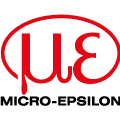
Posted to News on 17th Sep 2007, 19:06
Mil Spec connectors deliver improved signal integrity
Hypertac's new SnapTac connectors offer designers of military systems improved signal integrity, IP67 sealing and the robustness required for use in extreme environments. SnapTac connectors combine the company's high-reliability hyperboloid contact technology with the mechanical features of a spring-loaded contact. The connectors have been designed for high-speed data-audio-video transmission by upgrading commercial Ethernet, USB, IEEE 1394 interconnect to Mil Spec performance.
The SnapTac range was originally designed for use in the Future Soldier programme, which aims to develop wearable electronic systems for communication, identification/recognition and other tasks critical to military personnel. SnapTac products can satisfy even the most demanding of design requirements, offering quick and easy mating and unmating with hardware coding to avoid mis-matching, and IP67 sealing, both when mated and unmated.
Like all wearable electronics, the Future Soldier application also requires the compact size and reduced weight provided by the SnapTac range. The new connector family incorporates full line EMI shielding and uses Hypertac's Hyperspring connector technology to ensure low contact resistance and excellent signal integrity.
SnapTac connectors also provide for high robustness throughout their lifetime. They provide an inherent self-cleaning wiping action, thereby eliminating the need for a protection cap, while the nature of the electrical contacts also substantially reduces contact fretting for increased reliability.
Available in both circular (seven-, 13-, or 19-way) and rectangular (12- and 21-way) form factors, SnapTac connectors combine a Hypertac socket placed between the barrel and the plunger of a common spring-loaded contact. This means that separate structures provide the physical spring action and the electrical conduction function, enabling Hypertac to employ two different materials to optimise the physical and electrical performance of the connector. In particular, this reduces ohmic losses and eliminates the inductive effects that can be caused by the coiled geometry of a spring contact.
Want the latest machine building news straight to your inbox? Become a MachineBuilding member for free today >>

















